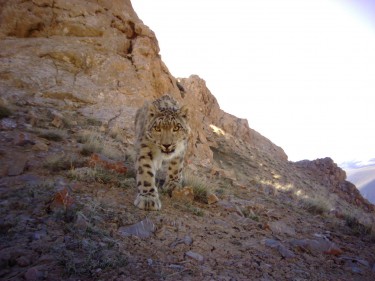
School of Environmental and Forest Sciences doctoral student Shannon Kachel was recently involved in the capture and first successful satellite collaring of a snow leopard in Kyrgyzstan. The female, estimated to be between six and seven years old, was caught near the Kyrgyzstan-China border in Sarychat-Ertash Strict Nature Reserve.
Snow leopards are among the most elusive and least studied of the big cats, and are listed as endangered on the IUCN Red List of Threatened Species. Scientists believe that only 4,500 to 10,000 adult snow leopards remain in the wild—the exact number is difficult to pinpoint since so few leopards are ever seen. GPS collaring will open up a new and important window for researchers, providing more information than ever on their movements and range, which can be used to help with broader conservation efforts in the region.
Kachel, who is working with Professor Aaron Wirsing, is the principle investigator on a project involving a variety of partners, including Panthera and several Kyrgyz state agencies and research institutions.
Read more at SEFS' Offshoots blog »
